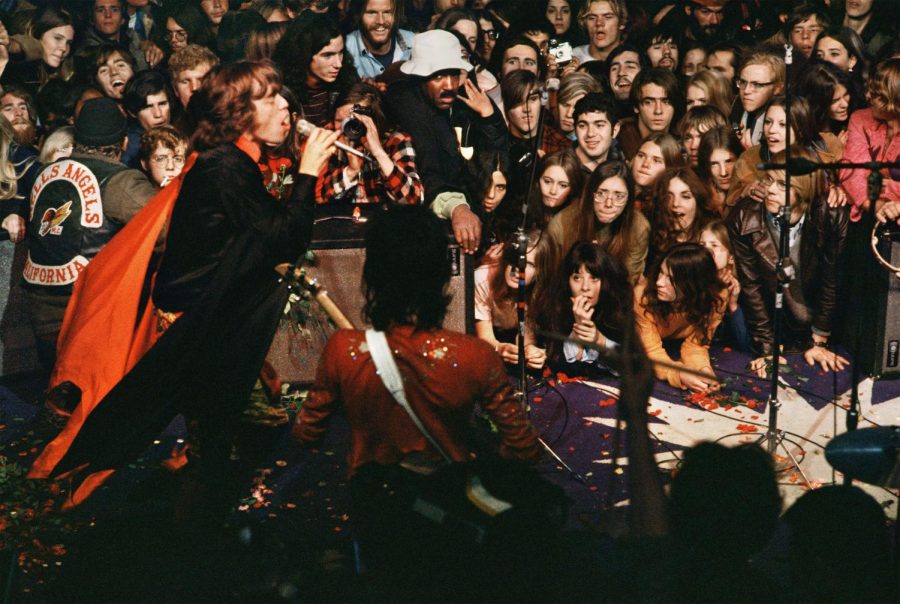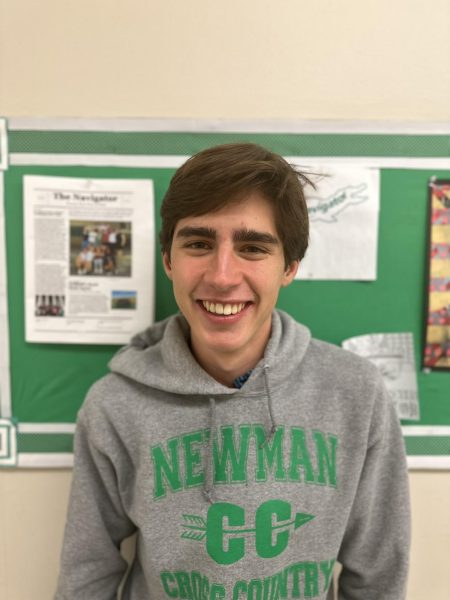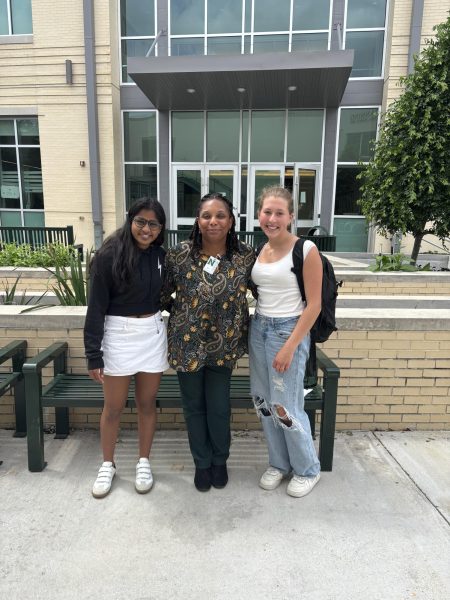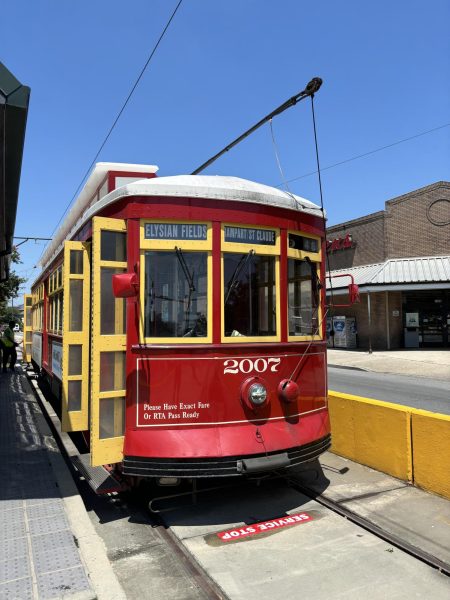Music, Madness, and Murder: The Story of the Altamont Free Concert
The year is 1969. Two men have landed on the moon, Richard Nixon is president, and the Rolling Stones are the biggest band in the world. Their single “Honky Tonk Women” was released in July and was number one on the Billboard charts for five weeks, becoming the fourth most popular song of the year. Their album Let It Bleed would be released that winter, eventually selling over 3 million copies. So it’s no surprise that on November 7, 1969, the Rolling Stones started an American tour, their first tour in two years.
However, many American Stones fans were very upset by the concerts’ high ticket prices. Tickets ranged from $5.50 to $8.50 (around $45 to $70 in 2022), compared to the average $3.50 to $6.50 ticket prices (around $30 to $55 in 2022). In order to satisfy their fans, the band had to make a last-minute decision, so in mid-November, a free concert was announced that would take place after the tour had finished. The Stones would headline the concert along with other popular bands like Jefferson Airplane and the Grateful Dead. The planned location for the festival was Golden Gate Park in San Francisco, where many successful free concerts had been held over the past few years. The concert was even going to be filmed for the documentary about the Stones’ tour, later called Gimme Shelter, which would surely make the band thousands of dollars upon release. It would be the biggest party of 1969. But that’s not what ended up happening.
At some point, the band realized that a concert with over 50,000 people projected to attend needed a security force in order to function properly. So they turned to the Oakland chapter of the Hells Angels. The London chapter of the Angels had previously acted as security at the Stones’ free concert in Hyde Park that July. The concert was a major success with no reported violence from the crowd, despite the band’s sloppy playing. However, the Stones didn’t know that the British Hells Angels were considered much less violent than their American counterparts, who were sometimes known for attacking audience members. A few weeks before the concert, another problem arose. The city of San Francisco blocked the permits for using Golden Gate Park for the concert. The backup location, Sears Point Raceway in Sonoma, accepted the concert but raised the price to $100,000 after they found out the concert was going to be filmed. The Stones quickly looked for a new location and eventually found one: the Altamont Speedway outside of Livermore. The new location was announced on Thursday, December 4, only two days before the concert, which would take place on Saturday, December 6.
On Saturday morning, over 300,000 people arrived at the Altamont Speedway to see their favorite bands. To open the concert, Santana played an hour-long set on top of the 4-foot stage that stagehands had built due to lack of time. All seemed to be going well until the band had to abruptly stop playing during their song “Soul Sacrifice.” Violence had broken out at the foot of the stage between the Hells Angels and some audience members. The concert promoters rushed to the stage and yelled for the audience to stop fighting and enjoy the music. The message went across pretty well, with the violence coming to a stop. Next, Jefferson Airplane took the stage. At the beginning of their set, violence had broken out once again. In an attempt to make peace with the hostile crowd, lead singer Marty Balin jumped into the audience and was beaten unconscious by a Hells Angel with a pool cue. The crowds congregated near the edge of the stage as band members tried frantically to calm the audience down. Everybody could tell that things were getting worse. Unfortunately, they would only get worse.
Meanwhile, the Rolling Stones were flying into the Speedway from Muscle Shoals, Alabama, where they had been recording songs for their next album. As the band got off their helicopter and walked through the crowd to the backstage area, an audience member ran up and punched lead singer Mick Jagger in the face. The fan then ran away, screaming “I hate you! I hate you!” The Stones knew they had a problem.
That afternoon’s entertainment started with a set from the country-rock group The Flying Burrito Brothers. Surprisingly, there was no reported violence during their performance, despite the band being the most unknown act at Altamont (every other band had at least one album in the Billboard Top 10, while the Burrito Brothers’ album The Gilded Palace of Sin had only peaked at #164). Crosby, Stills, Nash, and Young played the next set, which did not go so well. The crowds and the Hells Angels began to fight again and one member of the supergroup, Stephen Stills, was stabbed in the leg multiple times by an Angel. The Grateful Dead were scheduled to play next but had already left the Speedway. That morning, Santana drummer Michael Shrieve told members of the Dead about the Hells Angels beating Marty Balin during Jefferson Airplane’s performance. The band was terrified, worrying the same thing would happen to them, so the members gathered backstage and took a vote to decide if they would go on that afternoon. The result was unanimous: leave the concert immediately.
Three hours later, after the sun had gone down, a tired, cold, and impatient crowd watched the Rolling Stones take the stage and play the opening to “Jumpin’ Jack Flash,” one of their signature songs. One member of that crowd was an 18-year-old African-American man in a lime green suit. His name was Meredith Hunter. Hunter had arrived at the festival that morning with his girlfriend, a white woman named Patty Bredehoft. During the gap between sets, Hunter walked back to his car, where Bredehoft was waiting, scared, and ready to leave. Hunter encouraged her to return to their place in the crowd so they could watch the Stones play. He then went to the car and unlocked the truck, pulling out a revolver. “Why are you getting that?” Bredehoft asked. “It’s to protect myself,” Hunter replied. “They’re getting really bad. They’re pushing people off the stage and beating people up.” Bredehoft still wanted to leave. She thought that the concert was too dangerous and risky to return to. But Hunter convinced her to go back and see the Stones. So they walked together through the darkness and into the crowd.
As the Stones started playing their third song, “Sympathy For The Devil,” more fights broke out at the front of the crowd, caused by fans pushing over the Hells Angels’ motorcycles. Since the stage lights were unusually placed behind the band, everyone on stage could clearly see the violence in the audience. Mick Jagger asked the band to stop playing and started talking to the audience. “Brothers and sisters, everybody be cool now. Come on. That means everybody, just cool out! Will you cool out? Something very funny always happens when we start that number.” The fights soon ended, and the band continued to play the song. After a few blues numbers, more violence erupted, but it persisted despite pleading from band members. The Stones figured there was nothing they could do but play, so guitarist Keith Richards started playing the opening chords to “Under My Thumb.”
When the Stones began the song, Meredith Hunter and Patty Bredehoft were stuck in the cramped crowd. When the audience heard the song, it began to surge forward near the stage like it normally did, but this time Hunter went with it. As Hunter was pushed near the stage, a Hells Angel pulled him up and punched him in the face. As Hunter jumped back into the crowd, so did a few Angels, ready to strike. Hunter pulled the gun out of his pocket. Alan Passaro, an Angel standing near the side of the stage, saw Hunter reach for his gun. Passaro quickly grabbed a hunting knife from his pocket and ran into the crowd. As Mick Jagger sang the final lyrics to the song, “Say it’s alright, I pray that it’s alright,” a hole formed in the crowd, leaving Patty Bredehoft alone in the center, screaming. Meredith Hunter ran into the hole, running away from the Angels and flailing his gun. As Hunter aimed the gun towards the stage, Alan Passaro ran at Hunter, holding his knife high in the air, and stabbed Hunter multiple times in the back and neck. The crowd then regathered, filling the hole. Unbeknownst to him, cameraman Baird Bryant, at Altamont to film the Stones’ tour documentary, filmed the entire stabbing from his spot on the stage. A man named Paul Cox was standing near Hunter when he was stabbed and helped carry him to the Red Cross tent before Hunter passed out. Dr. Richard Fine was at the tent and realized Hunter needed immediate surgery and had to be taken to a nearby hospital via helicopter. However, the only available helicopter was reserved for the Stones and the pilot would not let Dr. Fine enter. The only thing left to do was call for an ambulance. But by the time the ambulance arrived, Meredith Hunter had been pronounced dead at around 6:30 p.m. on the night of December 6, 1969. He was 18 years old.
In the weeks after Altamont, most local and national newspapers reported that the concert was a huge success. However, the writers at Rolling Stone Magazine, many of whom attended the festival, knew this was not the case, and they wanted the real story to be heard. On December 21, 1969, only 2 weeks after the concert, the Rolling Stone Altamont issue was released and completely changed the public’s view of the festival. It was not a peaceful success. Instead, it was a violent nightmare. Gimme Shelter, the documentary about the Stones’ American tour was released in 1970, complete with footage of Meredith Hunter’s stabbing. The documentary gained national attention and caused Alan Passaro to go to court for murdering Hunter. After a jury repeatedly watched the seconds-long footage, they decided that Passaro had used self-defense due to Hunter’s gun. Passaro was acquitted on all charges. Meanwhile, Meredith Hunter was buried in an unmarked grave at the Skyview Memorial Lawn Cemetery in Vallejo, California. The grave remained unmarked until 2008 when a fundraiser was started to honor Hunter.
Almost 53 years later, Altamont is still remembered as a cultural turning point. It has come to represent the end of the 1960s, the day when the hippie dream ended and the counterculture realized that without proper control, everything could go wrong. The concert remains relevant, especially with the deaths at Travis Scott’s Astroworld Festival in 2021, with the uncontrolled crowd almost mirroring the one at Altamont. As writer Greil Marcus remembered it, the Altamont Free Concert was truly “rock and roll’s darkest day.”






